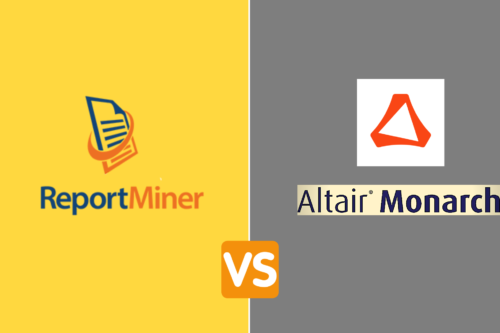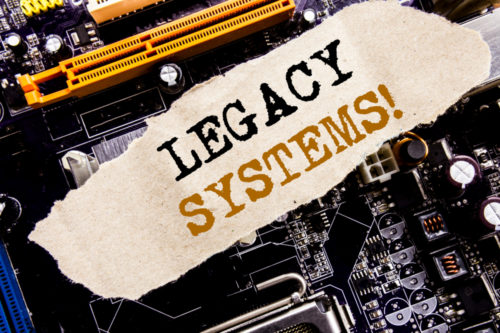Are you a data-driven business? Do you plan to extract and transform data from numerous sources and then load it into one or more targets? If yes, then Extract, Transform, Load (ETL) is the best possible option.
But what exactly is ETL? Read on to find out.
In this article, you’ll learn what ETL data integration is and why you should be using it. Plus, you’ll find a step-by-step guide to implement a successful ETL process and two use-cases to help you get started.
Let’s get rolling.
What is ETL Data Integration?
ETL stands for Extract, Transform, and Load. It is the underpinning of today’s data-driven businesses and fundamentally defines a three-step process.
- Extraction: Raw data is acquired from disparate sources (such as a database or an application).
- Transformation: The acquired data is altered, cleaned, and synchronized so that it becomes easier for the end user to read.
- Loading: Once the data is transformed, it is loaded into a target system, which basically is a business intelligence (BI) tool or a database.
All About ETL: From Manual Coding to Automation
ETL became popular in the 1970s when businesses started working with mainframe computers to store transactional data from across their operations. As a result, there arose a need to integrate all this data effectively. This is where ETL helped companies.
Data warehouses entered into the scene in the 1980s and offered integrated access to data from several disparate systems. But the issue was that many data warehouses necessitated vendor-specific ETL tools. So businesses opted for different ETL tools to use with different data warehouses.
However, these early solutions required manual effort in terms of writing scripts that would also have to be frequently adjusted for various data sources.
The increase in data volume and complexity led to the advent of automated ETL process, excluding manual coding and offering an automated process to oversee the data flows.
Beers & Diapers Analogy: Why ETL Process is Important?
There’s an interesting story that’s often mentioned when talking about the power of data. And it’s called the beer and diaper analogy.
WalMart discovered through data mining that the sales of diapers and beer were correlated on Friday nights. So they placed both these items closer together and saw a remarkable increase in sales.
Now, we aren’t sure if this story is true but we certainly do know that a company can use its data to gain valuable insights and make profitable decisions.
Here’s why you need ETL to make your data insightful:
1. ETL process saves time and effort of manually handling data
The biggest advantage of ETL process is that it helps you gather, transform, and consolidate data in an automated way. This means you can save the time and effort of importing rows and rows of data manually.
2. ETL makes it easier to work with complex data
Over time, your business has to work with a large volume of data that’s complex and diverse. For example, there could be different time zones, customers’ names, device IDs, and location.
Throw in some more attributes to the mix and you can find yourself formatting data round the clock.
Plus, incoming data files can be in different formats, layouts, and types. This is where ETL can simplify things for you.
3. ETL reduces risks associated with human error
No matter how careful you are with your data, you aren’t really safe from making errors. For instance, data may be accidentally duplicated in the target system, or manual inputs could be entered incorrectly. By eliminating human intervention, an ETL tool can help you dodge such a scenario.
4. ETL helps improve decision-making
By automating critical data practices and reducing the chance of mistakes, ETL helps ensure that the data you receive to analyse is of the best quality possible. And high-grade data is fundamental to making better corporate decisions.
5. ETL process boosts return on investment (ROI)
As you save time, effort, and resources, ETL process ultimately helps you increase your ROI. Plus, by improving business intelligence, it helps boost your profits.
This is because businesses rely on the ETL process for a consolidated data view to make better business decisions.
Five Steps for Successful ETL Implementation
Want to implement a successful ETL process? Follow these 5 steps:
Step 1: Ingestion
The first step is to clearly identify the data sources you wish to include into your data warehouse. These sources could be relational SQL databases, non-relational NoSQL databases, software as a service (SaaS) platforms, or other applications. Once data sources are identified, determine the particular data fields you wish to extract. Then, ingest or input this data from disparate sources in its rawest form.
Step 2: Transformation
The next step is to transform this data to make it uniform by using a set of business rules (like aggregation, joins, sort, union functions etc.).
Step 3: Velocity
Once data is transformed, it’s time to load it into the data warehouse. At this step, you’ll have to set the velocity, which refers to the frequency of data loading. Specify whether you’ll be inserting new data or if present data has to be updated.
Step 4: Validation
It’s important to carry out a record count check before and after data is transferred to the data warehouse, ensuring that invalid and redundant data is excluded.
Step 5: Automation
The last step is to automate the ETL process by using tools so that you can save time, improve accuracy, and reduce effort of manually running the process again and again.
By means of ETL automation tools, you can design the ETL workflow and monitor it via an easy-to-use graphical interface. Plus, these tools possess sophisticated capabilities such as data profiling and data cleansing.
ETL Use Cases & Examples
Here are the two most common use cases of how ETL processes can boost efficiency in enterprises. Check out these ETL examples.
1. Synchronizing data from several sources
Companies often have data stored in multiple independent systems.
For example, if two retailers merge their ventures, they may have multiple suppliers, partners, and consumers in common. Plus, they can have data about all those entities in their respective data repositories. However, both parties may use different data repositories, and the data stored in those repositories may not always agree.
In such a scenario, the two companies can combine their databases using an ETL tool that removes duplicates, standardizes formats, and synchronizes data.
2. Migrating data from legacy systems
Another use case of ETL tools is when companies transfer data from legacy systems to an updated system.
During data migration, an ETL tool helps extract the data from different sources, transform it to a format compatible with the new infrastructure, and then load it into the new system.
For example, one system may have phone numbers stored with parentheses (i.e. (111)111-1111). Whereas, another may store with hyphens (i.e. 111-111-1111). An ETL tool can help ensure all those phone numbers from both source systems have the same format before storing them in the target system.
Top ETL Tools for Data Integration
We’ve compiled a list of top four ETL integration tools available in the market to help you choose the one that suits your business needs.
1. Astera Centerprise
Astera Centerprise is a powerful ETL tool that consolidates data across numerous systems. It supports data manipulation with a range of in-built transformations and helps transfer data to a repository, all in an entirely code-free, drag-and-drop manner.
2. Hevo Data
Hevo Data helps businesses extract data from numerous sources (such as databases, event stream, and cloud applications) into the data warehouse. Everything occurs in real-time with no coding at all. It is easy to set up and natively integrates with a wide range of data sources.
3. Improvado
Improvado is a robust marketing ETL tool that allows you to connect marketing API to any visualization platform –even when you don’t have any technical skills. It can connect with 100+ kinds of data sources that you can connect and manage via a single platform in the cloud or on-site.
4. Skyvia
Skyvia is a cloud-based tool that needs no coding for data integration, backup, management, and access. It offers an ETL solution for several data integration scenarios, supporting CSV files, databases, cloud data warehouses, and cloud applications.
Bottom-line: ETL Processes & Examples
To obtain meaningful insights that support your company’s growth, you need to bring all your data from several disparate sources together in a usable format. This is where an ETL tool can help you.
An ETL tool simplifies and enhances the process of extracting the raw data dispersed across numerous systems into a data repository. Thus, choosing the right ETL tool is a vital part of any company’s data analytics stack.
The ETL tool you select should integrate all the data sources used by your business. It should offer a bug-free user interface and facilitate consistent, accurate, and safe data loading.







